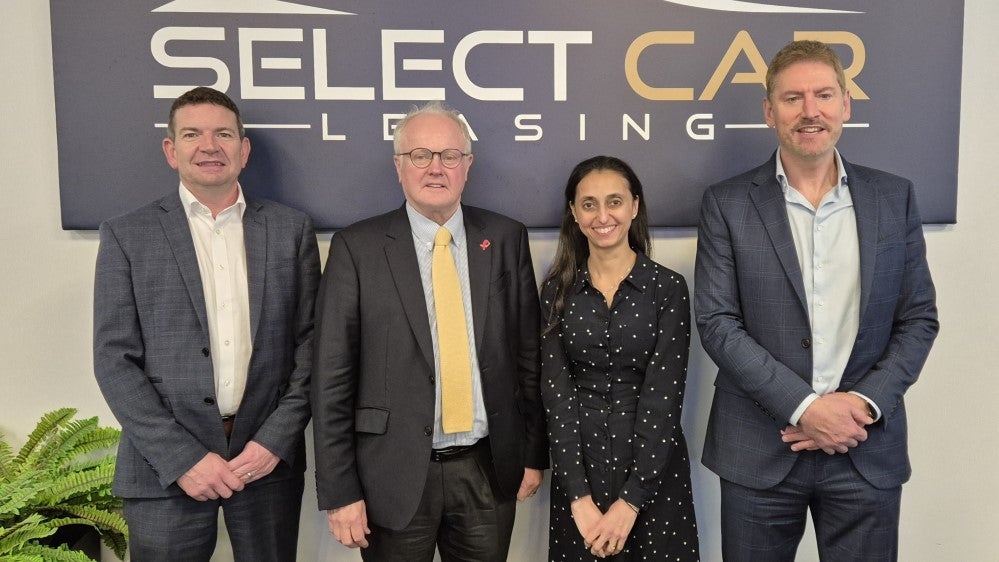Non-Prime Finance: Gap in the Automotive Market
The non-prime motor finance market, including finance
for sub-prime customers, still shows a serious imbalance between
supply and demand – which is good news for the funders still in
this space, finds Jo
Tacon
Around this time a year ago, this
magazine looked at the state of subprime and non-prime motor
finance, and found that significant amounts of funding capacity had
vanished over the course of last year, with one broker estimating
the subprime market lost four-fifths of its supply of finance over
the course of 2008.
Now, 12 months on, the gap between
supply and demand is wider than ever, with the withdrawal of
Welcome Financial Services having exacerbated the issue of a lack
of supply. This has led some industry figures to suggest, notably
at the Motor Finance roundtable in September, that a
significant opportunity exists in UK non-prime and subprime motor
finance, and that it would not be out of the question for new
entrants to look to move into this market.
But over the past year, the recession
has deepened; according to the Office for National Statistics, the
UK unemployment rate rose by 677,000 over the year to August 2009,
to reach nearly 2.5 million. With growing numbers of consumers
falling into the non-prime and subprime categories, how are those
finance companies left in this space finding the market?
Underwriting tightened
Finance providers of all types
have been able to tighten their underwriting standards as a result
of less competition for new business, which has had a knock-on
effect all the way from prime to subprime, as lenders have looked
to improve the quality of their customer base – and have been
afforded the breathing space to do so, thanks to relatively low
levels of competition.
How well do you really know your competitors?
Access the most comprehensive Company Profiles on the market, powered by GlobalData. Save hours of research. Gain competitive edge.

Thank you!
Your download email will arrive shortly
Not ready to buy yet? Download a free sample
We are confident about the unique quality of our Company Profiles. However, we want you to make the most beneficial decision for your business, so we offer a free sample that you can download by submitting the below form
By GlobalDataJon Hudson, head of financial services
at Experian, explains: “Banks have tightened up their lending
policies, so people who previously qualified for prime finance are
often applying for manufacturer or dealer finance instead.
“As these organisations review their
lending policies this in turn creates a greater demand for subprime
and non-standard loans, as not only are more people falling into
this category, but lenders have also tightened their underwriting
policies, and are more selective about the customers they are
taking on.”
Finance houses broadly agree with this
assessment.
“Over the past 12 months, the
recession has impacted the motor finance industry, and we have
tightened up our credit control accordingly,” says Guy Thompson,
managing director of Advantage Finance.
“In terms of volumes, however, this
has only had a marginal effect since, thanks to the withdrawal of
other market players, we have enjoyed similar business volumes this
year as last. We have at the same time slightly increased our
income streams by upping interest rates in order to reflect the
risks taken on.”
John Sinclair, CEO of British Credit
Trust (BCT), adds: “It is clear there are large tracts of business
– from non-prime to true subprime – that are not being served
currently by mainstream financiers, as all funders have moved up
the risk-reward curve.”
Peter Minter, managing director of
Duncton, adds: “There has been a dramatic clear out of independent
finance providers in the subprime space, to the point where there
are very few players left still lending.
“We are one of the last still going
full guns, with our lending limited purely through logistics, as
there is more demand for our product than we can fulfil.”
At ACF Car Finance, which operates a
chain of used car retail outlets across the UK and arranges finance
for customers in partnership with sister companies The Funding
Corporation and Cygnet Financial Services, a strategy has already
been put in place to improve the quality of customers channelled to
its finance partners, says Norman Beaumont, sales and marketing
director.
“We are very comfortable with our
volumes, bearing in mind the quality constraints we have in place,”
Beaumont notes.
“Our finance company partners want us
to be selective about our customers, so we can build a strong and
sustainable business.”
Sustainable returns
Keeping strict control over
arrears levels is more critical than ever during a recession,
although – somewhat surprisingly – none of the finance companies
which Motor Finance spoke to for this article reported a
rise in their arrears levels.
“Despite the initial shock of
recession, the arrears performance not only at BCT but across the
industry has seen a positive trend, because, I think, consumers
themselves have had to prioritise commitments,” says Sinclair.
There are some strange behaviours
around that prioritisation process, Sinclair adds, as one would
think that mortgage payments would come first – but that is not
always the case, as the motor vehicle is a critical tool for
mobility.
“Some sense is prevailing and people
are seeing the importance of maintaining their car credit
commitments – this is our experience, at least – especially if they
know they can’t easily find finance elsewhere,” Sinclair
explains.
In-house arrears management is another
strong theme.
“Collections are managed entirely
in-house, albeit with agents used to collect cars, if needed,” says
Minter. “Arrears management is core to our business, and not
something we could outsource. The collections team say that it is
harder to persuade delinquent customers to pay, however.”
But arrears levels have not increased
over the year, Minter says.
“As a company we are experiencing
better payment records than we used to, thanks in part to enjoying
a better credit risk customer than previously,” he adds.
Thompson concurs, and says: “We
haven’t seen a significant change in customer payment patterns,
although some might be struggling to pay the full amount of their
loan, through lost overtime, or worse, lost employment for example,
but in the main most are still working and have a very good
attitude to debt.”
Other variables, however, have seen a
change.
“We have noticed that customers are
keeping their cars for longer periods as they cannot get finance
elsewhere,” Thompson adds.
“There has been a slight rise in
voluntary terminations [VTs] but a drop in early settlements, which
we see as driven by the wider economic situation, with some
customers looking to get out of financial commitments due to a
change in their circumstances.”
Minter adds that Duncton has seen its
average balances decrease, although deposit sizes have remained the
same.
“There aren’t as many people looking
to finance high-end cars out there as there used to be, although
customers of this type do still exist,” he says. “There are fewer
‘aspirational’ drivers, and more ‘necessity’ drivers than before.
The levels of VTs we are seeing has died off after rising earlier
this year, which is good news, although we only lend with a
relatively low loan-to-value rate so were less vulnerable in this
area in any case.”
Sinclair, meanwhile, believes that a
realignment of the dealer-funder partnership is needed, so that
both parties share more equally in the risk and the reward of
lending to non-prime and subprime customers.
“Business models as they stand will
have to change – especially as regards commission. In a
capital-intensive business, it is not a model that can be
sustained,” he says.
“This is most definitely not to
circumvent the dealer – in fact, the best way to achieve a
win-win-win for dealer, lender and customer is for lenders and
dealers to form a partnership to present a sensible offering to the
customer, where rewards are shared as they are earned.”
Explaining further, Sinclair adds:
“Under this type of arrangement, a dealer can get to influence the
customer proposition much more than has been the case under the
introductory-type relationship that lenders and dealers have at the
moment.”
In terms of approving and pricing the
customer, there has been an uneasy trust between dealer and lender,
as most business transacted at the point of sale leaves lenders
relying on dealers to validate the customer, Sinclair says, as the
dealer is the only party that deals directly with the customer.
But if it is in dealers’ best
interests to make sure the business written by their finance
partner is sustainable in the long term, “that’s got to be a good
deal for the customer as well as they will get the best of both
worlds”, Sinclair states.
Building this kind of relationship
requires a partnership approach, with both parties aligned to a
sensible customer proposition with sensible returns for all
parties, as opposed to an introductory relationship, in his
view.
Ready for regulation
The greater incidence of manual
underwriting in subprime and non-prime finance, and more detailed
examination of potential customers, means that the industry is
perhaps more prepared for full compliance with the Office of Fair
Trading’s (OFT) new guidelines on irresponsible lending than its
prime counterparts.
The question of affordability of a
loan, for example, has long been at the heart of underwriting
decisions in non-prime and subprime finance.
Sinclair adds: “[Wholesale] funders
don’t necessarily understand car finance; they look at a car and
see a mobile asset which is depreciating, and note that fulfilment
of security and repossession are complex and difficult tasks.
“But I would encourage them to see
that in most sectors of motor finance, and where the security
instrument is hire purchase, this is really a personal loan secured
partially by way of a car.
“This is why, in non-prime at least,
affordability is the central component of any decisioning system,
as we are dealing in cashflow lending.” .
But the sheer volume of new regulation
with which lenders must comply causes its own problems, says
Minter.
“The government’s overwhelming urge to
regulate, and inability to ensure that funding is in place, is yet
another nail in the coffin for new car sales. There is so much on
the go now – it is really quite frightening,” he adds.
Minter namechecks the consumer white
paper on responsible lending; the Consumer Credit Directive; the
OFT’s irresponsible lending guidance and its review of high-cost
credit; and the Treasury select committee on credit ratings as just
some works in progress which will change the landscape in which
motor finance companies operate.
“And this raft of new legislation is
putting off any chance of other finance businesses entering this
market, while at the same time stifling innovation by making it
incredibly difficult to get any new product past the barriers which
have been raised,” he warns.
Funding to stay tight
The withdrawal of certain notable
subprime motor finance providers from the market since the start of
the credit crunch – Blue Motor Finance, Park Motor Finance – was
down to the flight of wholesale funders, for whom anything with the
term ‘subprime’ attached to it suddenly became toxic.
“Banks are very nervous about
re-entering the subprime arena, and venture capital firms are also
nervous, and we believe this will continue throughout the
recession,” says Thompson.
“We have just secured our future
funding with our bankers, and the group as a whole has adequate
funding availability for its growth plans.”
Sinclair says: “The opportunities that
exist in non-prime are significant and should be attracting new
entrants, particularly where the cost of entry will be low. In
previous recessions, opportunistic organisations have moved ahead
of the changing tide, but at present the funding for such players
is not there, as funding is either bank- or captive-originated, and
neither type of institution is in a position to alter its stance at
present.”
Looking to the future
For finance companies in the
non-prime and subprime space, the future looks fairly hopeful.
“Despite the difficulties that the
credit crunch has brought, and the challenges of new and disjointed
legislation, we actually are very positive about the future,” says
Minter.
“We are continually adapting our
products and services to meet the changing needs of customers – and
example of which is our planned introduction of lower rate products
for better-risk customers.
“We believe that this appetite for
growth and our continued prudent approach to loan-to-value rates,
tied to our financial st in a market crying out for more
capacity.”
Advantage is also looking to expand
its horizons, says Thompson, through a tie-up with franchised
dealers to offer finance for non-prime customers who want to take
part in the scrappage scheme.
“We have ring-fenced £1 million for
scrappage deals,” Thompson adds. “We are talking to certain key
dealers about utilising that fund. Through no fault of their own,
non-prime customers may fall outside prime lenders’ scoring
systems, but why shouldn’t they also have access to the
government’s scrappage scheme?”.
Brokers will also continue to be a key
route to market for the company, Thompson states.
“We don’t think paying brokers is a
bad thing – on the contrary – which is why we don’t claw back
commissions,” he adds. “The commissions we pay them have even
increased slightly, as we are getting more volume of business from
certain brokers, as consolidation has occurred among
intermediaries.
“We get around 80 percent of new
business through brokers, with the rest coming in from dealers who
prefer not to deal through brokers, and from returning customers,
who make up around 10 percent of our new business.”
The need for subprime and non-prime
finance is not going to go away just because fewer players are
active in this area.
As Sinclair points out: “Car
purchasing is an evergreen industry and I don’t think we will see
the day we don’t need a car” – and a person’s credit rating does
not affect that need. But the gap in the market for non-prime
finance does not look like it will ease in the immediate future,
leaving many potential customers out in the cold – at least until
new entrants decide that the risk inherent in non-prime lending is
outweighed by the rewards on offer to a tightly-managed finance
company.
Read More:
• FLA Q&A: Paul Harrison, head of motor
finance
• Jon Hudson, Experian: More data, more
awareness
• A broker’s view: Richard Hoggart, DSG Financial
Services
• The next steps for
non-prime
Dr
Roger Gewolb, one of the founders of the non-prime and
sub-prime motor finance industry in the UK, gives an overview of
recent changes to the market, and indications as to its future
development







